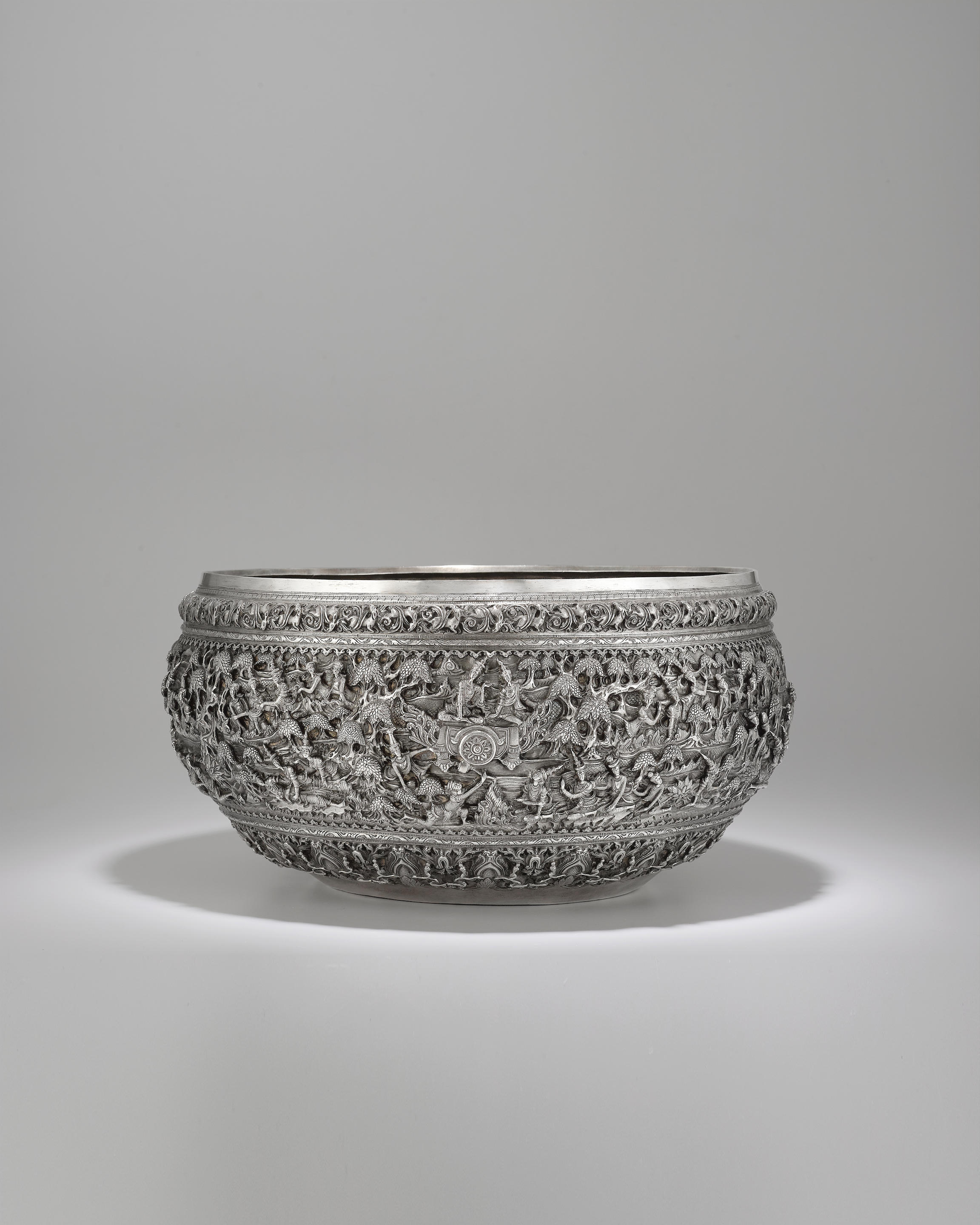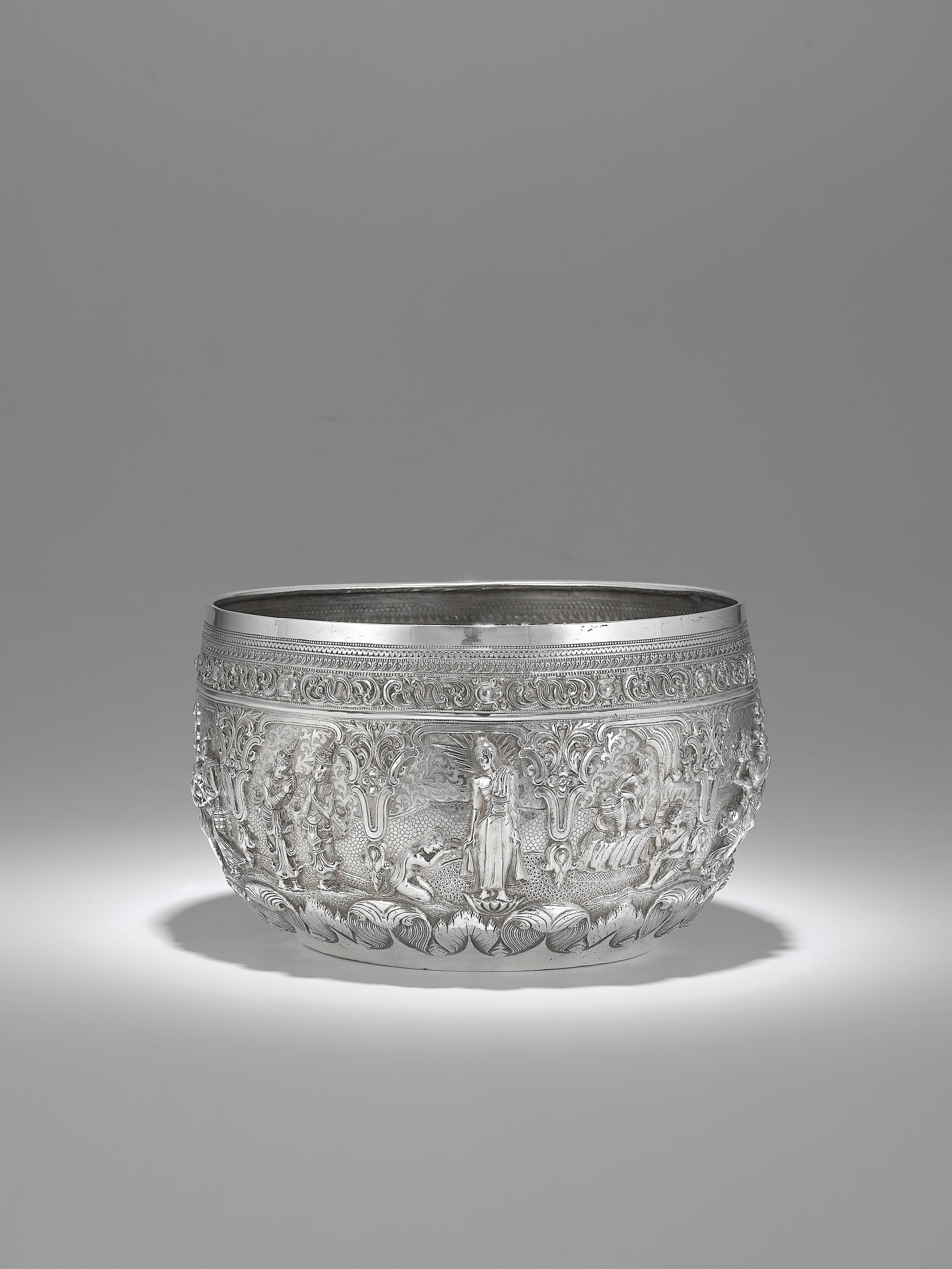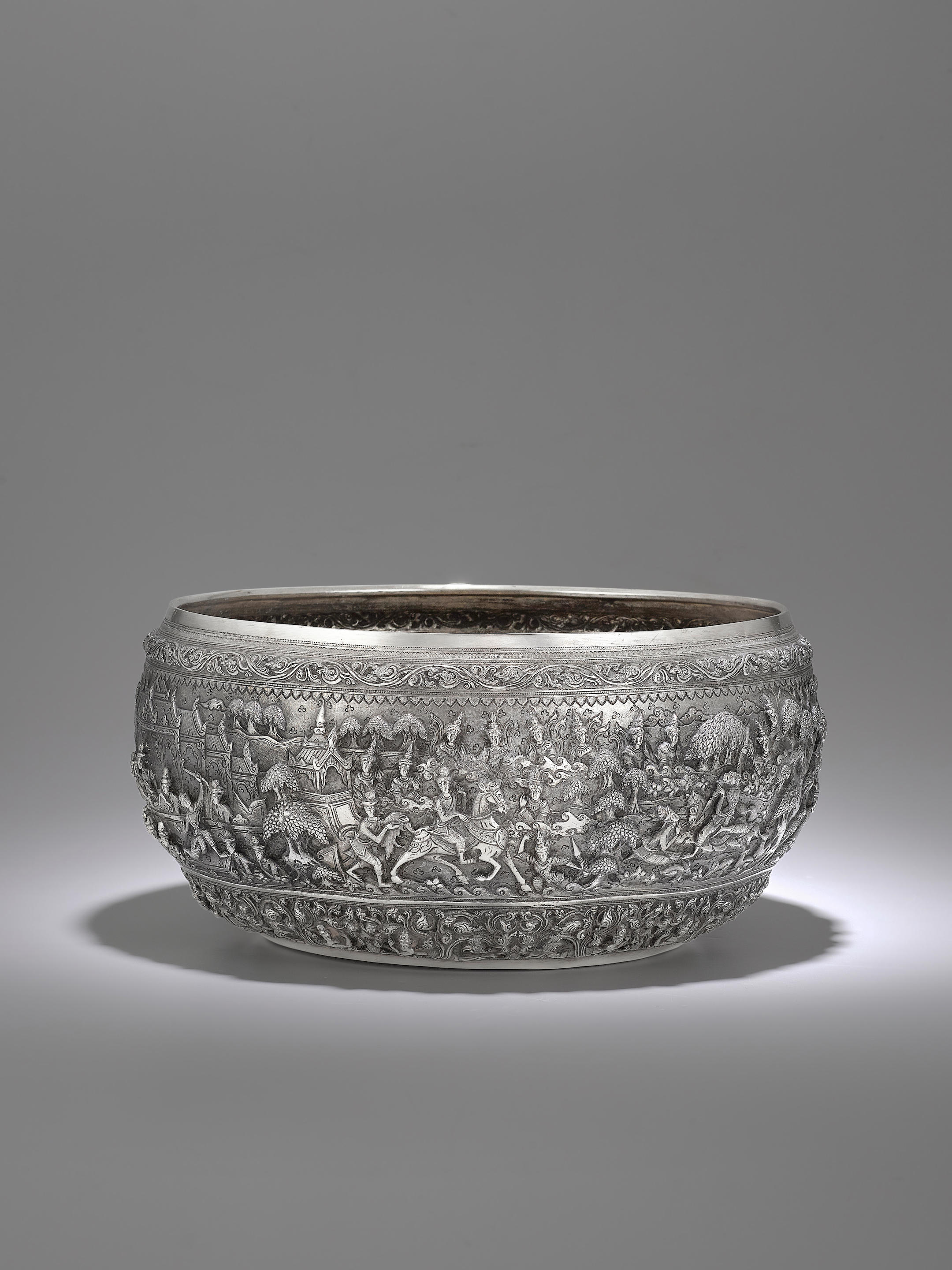A SILVER OFFERING BOWL WITH SCENES FROM THE RAMAYANALOWER BURMA (MYANMAR), CIRCA 1890 An inscription on the underside of the base, translated: "Madam Saw Hla's silver bowl". 6 1/2 in. (16.5 cm) high; 10 5/8 in. (27 cm) diameter; 35 troy oz (1,095 grams) approximate weightFootnotesThe Ramayana in Burmese Silver The story of Rama, best known in its iteration as Valmiki's Ramayana, has played a significant role in the art, history, and politics of South and Southeast Asian civilizations. There are hundreds—if not thousands—of versions, with local adaptations in poetry and prose, painting and sculpture, and drama and dance, each one illustrative of its own time and place. Underpinning the story's popularity is its political use by rulers of several dynasties, who sought to embody the restoration of religious values carried within the text. The many mediums in which the Rama story was retold, performed, and visually translated carried their legacies onto Burmese silver. Offering bowls clearly informed by literary versions, including Valmiki's Ramayana, would have been appropriate for donations to both Buddhist and Hindu temples. Like the jatakas, the story would also have had the appeal of reinforcing traditional values especially within immigrant Indian households, which formed a significant part of the nouveau riche during the Silver Age. At other times, the showcasing of traditional architecture and complex narrative registers demonstrates a silversmith's familiarity with pictorial renderings of the Rama story in painted murals and illustrated manuscripts (parabaiks), which also commonly serve as merit-generating donations in Theravada Buddhism. Yet perhaps the dramatic performance of the Ramayana had the most prevalent influence on Burmese silver, giving rise to frequent depictions of figural choreography and Konbaung attire in narrative scenes, and to pieces encapsulating the story with a limited cast of key characters. Published: David Owens, Burmese Silver Art: Masterpieces Illuminating Buddhist, Hindu and Mythological Stories of Purpose and Wisdom, 2020, p.72, no.S125, fig.3.50.
A SILVER OFFERING BOWL WITH SCENES FROM THE RAMAYANALOWER BURMA (MYANMAR), CIRCA 1890 An inscription on the underside of the base, translated: "Madam Saw Hla's silver bowl". 6 1/2 in. (16.5 cm) high; 10 5/8 in. (27 cm) diameter; 35 troy oz (1,095 grams) approximate weightFootnotesThe Ramayana in Burmese Silver The story of Rama, best known in its iteration as Valmiki's Ramayana, has played a significant role in the art, history, and politics of South and Southeast Asian civilizations. There are hundreds—if not thousands—of versions, with local adaptations in poetry and prose, painting and sculpture, and drama and dance, each one illustrative of its own time and place. Underpinning the story's popularity is its political use by rulers of several dynasties, who sought to embody the restoration of religious values carried within the text. The many mediums in which the Rama story was retold, performed, and visually translated carried their legacies onto Burmese silver. Offering bowls clearly informed by literary versions, including Valmiki's Ramayana, would have been appropriate for donations to both Buddhist and Hindu temples. Like the jatakas, the story would also have had the appeal of reinforcing traditional values especially within immigrant Indian households, which formed a significant part of the nouveau riche during the Silver Age. At other times, the showcasing of traditional architecture and complex narrative registers demonstrates a silversmith's familiarity with pictorial renderings of the Rama story in painted murals and illustrated manuscripts (parabaiks), which also commonly serve as merit-generating donations in Theravada Buddhism. Yet perhaps the dramatic performance of the Ramayana had the most prevalent influence on Burmese silver, giving rise to frequent depictions of figural choreography and Konbaung attire in narrative scenes, and to pieces encapsulating the story with a limited cast of key characters. Published: David Owens, Burmese Silver Art: Masterpieces Illuminating Buddhist, Hindu and Mythological Stories of Purpose and Wisdom, 2020, p.72, no.S125, fig.3.50.















Testen Sie LotSearch und seine Premium-Features 7 Tage - ohne Kosten!
Lassen Sie sich automatisch über neue Objekte in kommenden Auktionen benachrichtigen.
Suchauftrag anlegen